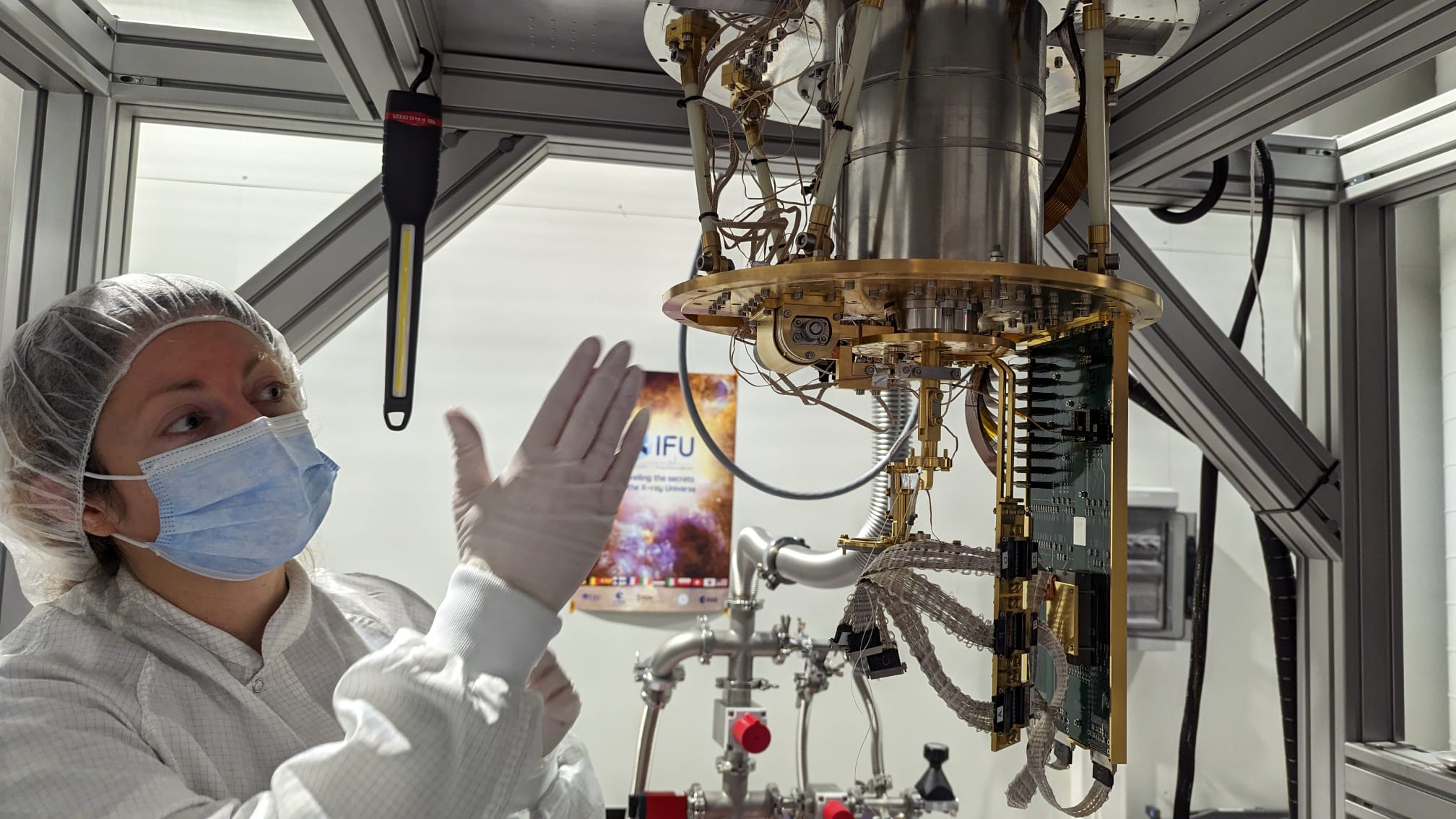
Date.
Sophie BEAUMONT, can you briefly present yourself, and your work in general?
I am a detection chain engineer in the optoelectronics department at CNES. I actually only started this position less than a year ago, right after graduating with a PhD working on the X-IFU instrument of Athena. During this time, I had the chance to work with three different groups on different aspects of the X-IFU development. At NASA Goddard Space Flight Center, I was in the microcalorimeters group participating to the development of the transition-edge sensor (TES) detectors which will be at the heart of the instrument. At IRAP, I contributed to the development and validation of the 50 mK test bench which will be used for future demonstration of the first X-IFU detection chain and preparation of the ground calibration activities. Finally, still at IRAP, I spent some time doing scientific feasibility studies, in particular to assess the capabilities of the X-IFU to measure turbulent motions in nearby galaxy clusters. A large part of my current work is in direct continuation with the development of the 50 mK test bench.
What is your role and your main tasks within the X-IFU project?
I have different roles and tasks within the project. The predominant one at the moment is to focus on further developments of the 50 mK test bench at IRAP in order to test the first X-IFU like detection chain with demonstration models of the electronics. Indeed, the initial validation of the bench was performed with well-known electronics from GSFC and NIST. This is done in collaboration with many colleagues from the consortium. In direct connection with the work, I am a member of the detection chain working group. I am also a member of the calibration working group (XCaT) as the 50 mK test bench will later on be used to test and validate calibration sources before using them on the EM and FM. Finally, I recently became the point of contact on the CNES side for the anticoincidence detection chain (CryoAC) being developed at INAF.
What do you expect most from the X-IFU?
I am very excited at the idea to see the first spectra measured by the instrument, with a level of detail never seen before opening a new window to our understanding of the Universe. With an exquisite energy resolution, combined with high quality imaging, the X-IFU will be truly transformational, and for so many astrophysical questions. Although I find all X-IFU science objectives fascinating, from black holes to supernova or from stars to exoplanets, I do have a sweet spot for the study of galaxy clusters. I am certain that observations with the X-IFU will lead to great discoveries and with them greatly improve our understanding of the formation and evolution of large structures of the Universe. But other than the science itself that will be done with the instrument, I am also very excited to see the development of the X-IFU over the next decade, and all the subsystems and parts of such a complex instrument come together into an amazing mission.
What would you tell young people who want to work on the X-IFU?
I’d like to emphasize how both the project itself (in terms of instrument development) and its final goal, in terms of scientific capabilities and objectives, are exciting and challenging. Working on X-IFU is stimulating for so many reasons: from the development and assembly of cutting-edge technologies to the promise for new discoveries. This also means having the chance to collaborate with many bright people, from many different horizons, all working together on a common goal. There is no better opportunity to learn, whether it is by genuine curiosity, or to gain experience for a future career. It surely can be intimidating and overwhelming to work on such a complex project, but I believe in enjoying the learning experience and things will fall into place along the way.


 Youtube
Youtube